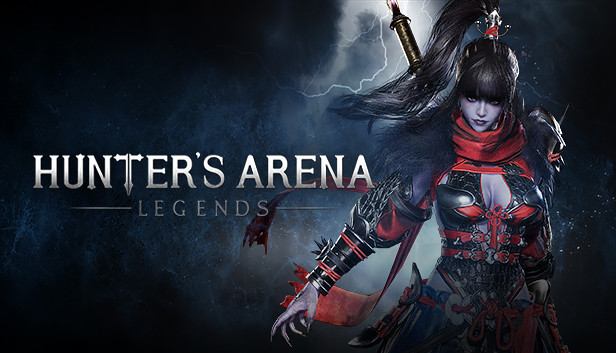For Beginners of Hunter’s Arena: Legends, here’s 13 various tips and trivia to help you break past beginner level of combat, into the intermediate stages.
Tip #1: Common Skills (Skill #1 & #2)
All characters share similar first and second skills.
Skill #1 is usually the combo skill that launches the target into the air for guaranteed damage, and Skill #2 is usually a safe, quick attack that pushes back and knocks the target down to the ground. So if you’re trying out and learning new characters and haven’t gotten the hang of them yet, you can still fall back on a familiar toolkit.

However, there are a few exceptions to this general guideline, namely Samjang and Tau. Instead of lifting the target up into the air, their first skills knock the opponents down into the ground (Tau causes Stun, which will also lead to knockdown, if left alone). And this works for them, because their other skills work specifically by pummeling targets that are laying on the ground.
Tip #2: Unique Skills (Skill #3, #4 and Passive)
These are the unique, signature skills of each character that give diversity to the game.
The range and effects of these skills vary greatly between each character, so without going into specific details of each and every skill, you’ll have to lab it out in the training room to figure out how to make the most of them.
However, Skill #4 shares one common aspect between all characters; it always comes with Super Armor. Usually, the effects of these skills are powerful and if used correctly, can turn a grim situation back around in your favor. They’re classified as normal Active-Skills, but with their Super Armor, powerful effects and long, 60-second cooldown, they’re arguably stronger than your Super-Skills.
Passive Skills are even more unique to each character than Skills #3 & #4 are, in the fact that their activation requirements are not key-bound and differ between all the hunters. For example, Jun has the ability to Quick-Step twice in succession (and normal characters can only Quickstep once), and Aiden’s Passive will only activate when his guard is completely broken.
It’s a good idea to check the in-game character guide while learning to use these skills.
Tip #3: Target Lock
Surprisingly, it’s pretty easy to whiff your attack, even when you’re busy slapping your opponents in the face.
Attacks launched at long-range, such as Ara’s Butterflies, or Jun’s Chainsword, also have a slightly narrower hitbox and are more prone to missing. But sometimes, while in the midst of your combo, your character could simply get turned around, whiff the target and leave you open to a counterattack.
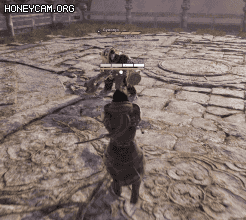
While it’s not a 100% perfect solution, locking onto the target with the scrollwheel button will improve the accuracy of your attacks in nearly all situations. However, while you’re locked on, your movements are slowed down to a turtle’s pace as your character strafes about, always keeping themselves faced towards your target. So the best time to lock onto a target is usually when you’re ready to attack.
Tip #4: Emergency Escape
If you’re taking a beating from the opponent, you can bail out at anytime by holding the LMB + RMB at the same time.
What you should keep in mind however is that this escape skill has a very long, 2.5-minute cooldown. In a Tagmatch, this means it’s a one-time use for each round, so you should use it very sparingly. Usually, the best time to use this escape is when your defenses are down, after you’ve been launched into the air, or after your Guard-Stamina is broken.
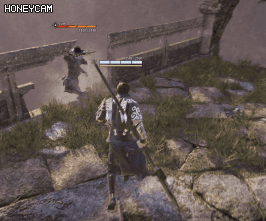
Besides safety, the Emergency Escape also has a few other useful properties that can be taken advantage of. The first is that you can control the direction of your escape, so you can better position yourself on the field afterwards. Secondly, it pushes back and knocks down the opponent, if they’re close enough, so if you’re lucky (or devious), you could potentially push them off a cliff! You could also take advantage of this free knockdown to okizeme the opponent.
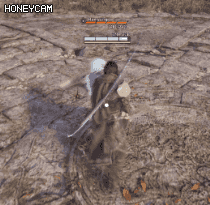
If you happen to be in a real pinch and you’ve already burned off your Emergency Escape, Skill #4 might be your last resort. If your opponent follows up their combo with any skill, you’ll have an opportunity to activate your own 4th Skill and its Super Armor, power through their attack, and potentially disrupt their combo. And depending on the Hunter, this might actually be more powerful than the normal Emergency Escape.
Tip #5: Evasion Cancel
If your attack fails for one reason or another, you can always cancel the animation with a Quick-Step.
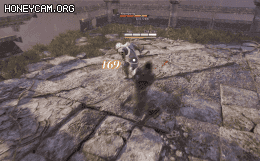 Bear in mind however that using Quick-Step in this fashion does not grant the IFrames that a normal Quick-Step does; the recovery animations are also longer, so your safety is not actually guaranteed. Due to the recovery limits of this evasion, it’s usually best to use this if your 2nd Skill is blocked (this topic will be covered later), or early on, after whiffing your attack.
Bear in mind however that using Quick-Step in this fashion does not grant the IFrames that a normal Quick-Step does; the recovery animations are also longer, so your safety is not actually guaranteed. Due to the recovery limits of this evasion, it’s usually best to use this if your 2nd Skill is blocked (this topic will be covered later), or early on, after whiffing your attack.

In a reverse situation however, by starting up with a Quick-Step, some of your skills will actually activate faster. This does not actually decrease the total time it takes to execute the skill as opposed to just standing still and activating it normally, but you do have extra range and IFrames to work with in this situation, making it useful for neutral interactions.
Tip #6: Guardbreak Extension
To keep a combo going for as long as possible, throw in your RMB Martial Arts (Guardbreaks) near the end of a basic combo to extend it and stun the target.
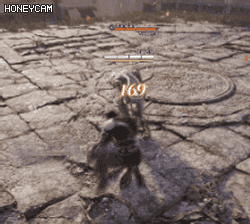 However, near the end of a combo is also when the combo receiver will be expecting a Guardbreak to occur, and they may be waiting for that moment to counter you. You should play around with the timings of your Martial Arts and opt to mix up your combos to make yourself harder to predict.
However, near the end of a combo is also when the combo receiver will be expecting a Guardbreak to occur, and they may be waiting for that moment to counter you. You should play around with the timings of your Martial Arts and opt to mix up your combos to make yourself harder to predict.
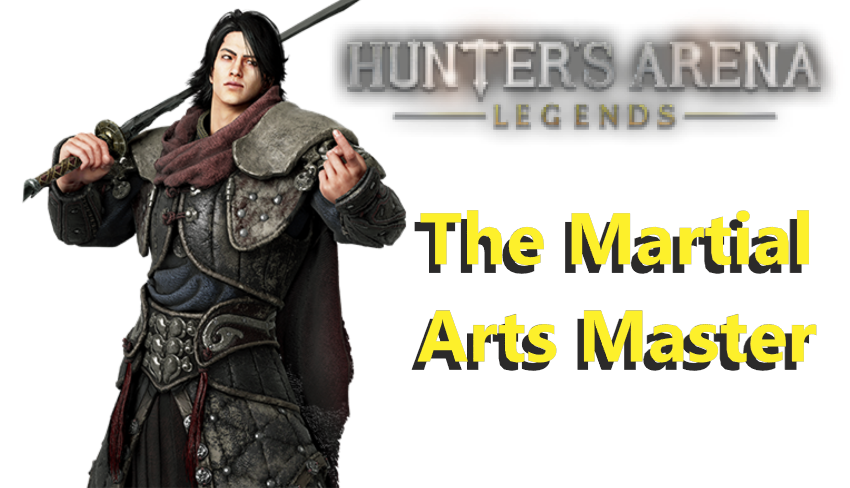
When it comes to Martial Arts combos, Jun has to be mentioned, as his are special and more powerful than the other hunters’. Unlike the other characters, who’s Martial Arts will leave the target stunned, Jun will launch his opponent up into the air with his, meaning his combos that follow afterwards will always be guaranteed to hit and deal massive amounts of damage.
What this means is that when Jun uses Martial Arts, the receivers can’t just spam the Guard command in case he uses a skill instead; they MUST react correctly to his attacks, or receive the punishment. As fighters become more skilled and the gameplay becomes more advanced, interactions with Jun will also become much more complex as he mixes up his combos, making him harder to read and correctly defend against.
Tip #7: Counter Spammers?
If your opponent appears to be taking an unusual amount of basic attacks, there’s a good chance that they’re expecting you to Guardbreak them and are spamming the Counter-Command.
If you suspect that this is the case, all you have to do is finish up the combo normally. If you’re scared of guessing incorrectly and getting counterattacked, then your best combo followups are to use Skills #2 & #4.
Tip #8: When In Doubt, Skill #2
I’ve briefly touched on this topic several times in this guide by now, but if you’re ever in doubt about what to do with your combo, then Skill #2 is your friend.
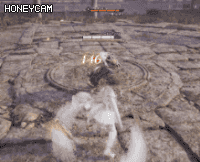
Skill #2 shares the trait of being a fast, knockback/knockdown, finishing skill across all characters. The level of emphasis on these traits varies between each hunter, but this makes the skill a relatively safe attack to use in any situation, with minimal chance of being counterattacked, especially if you Evade-Cancel the animations.
If the receiver of Skill #2 takes the hit, they’ll be knocked down, during which, you can use that extra time to okizeme them, as they’re standing back up. If the skill is blocked, most characters’ Skill #2 will push the target back into a safe(ish) neutral range and the attacker will recover from the recoil of having their skill blocked a lot faster than most other skills.
Skill #4, with their Super Armor, can also be used (less frequently) for similar purposes.
Tip #9: Suppression Combos
Utilizing the safe combo aspects of Skills #2 & #4, you can chain together some very long combos that are capable of completely destroying the opponent’s guard.
Because the strengths of Skill #2 and the entire aspects of Skill #4 are different across all the characters, the results of a suppressing combo using these two skills WILL VARY.
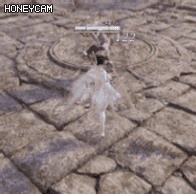
In a Tag Match, if your combo isn’t long enough, you can swap your fighters out in the middle of the combo and safely continue with the same attack pattern of Basic Attacks, Skill #2, Basic Attacks, Skill #4, Basic Attacks and finish.
If you’re on the receiving end of a suppression combo like this, you’ve already burned off your Emergency Escape and there’s no other chance of a getaway, your best bet is to just eat the attack as early on as possible and get knocked down, so you can resume a neutral game from there.
Tip #10: Counter Punishing
After defending yourself from your opponent’s attacks, the chance for your counterattack is indicated by an audibly loud “clanging” noise.
Usually, the only kind of counterattack permitted in these situations is a basic LMB attack and some characters’ skills.
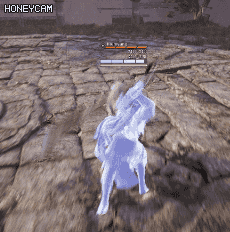 However, if the “clanging” noise indicator is VERY loud, this means that the attacker has most likely tried to attack you with Skill #1, failed, and is now suffering from the recoil of the attempted attack. In these situations, anything is fair game, but your best option is to launch them with your own Skill #1 for guaranteed combo damage.
However, if the “clanging” noise indicator is VERY loud, this means that the attacker has most likely tried to attack you with Skill #1, failed, and is now suffering from the recoil of the attempted attack. In these situations, anything is fair game, but your best option is to launch them with your own Skill #1 for guaranteed combo damage.
If you successfully Guardbreak your opponent, or succeed in countering your opponent’s Guardbreak attempt, Skill #1 remains your best option in these situations to punish the target.
Tip #11: Super Skill Timing
If you want to guarantee the accuracy of your Super Skill, you would use it in the same three situations as the previous topic of [Counter Punishing], and a few others.
Generally, outside of the 3 Counter Punishes, the success or failure of a Super Skill can be summarized with a Weapon Triangle; Super Skills beat Martial Arts and Active Skills, Guarding/Basic Attacks beat Active/Super Skills and Martial Arts beats Guarding.
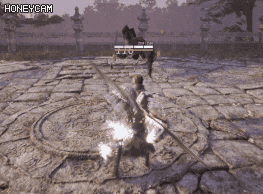
More specifically, a Super Skill beats anything that isn’t an Evasion, or a basic LMB Guarding function, and will even hit through Super Armored attacks. This goes onto include the Armored LMB Getup Attack from the downed position, as the Getup Attack doesn’t actually have a Guard function due to the Super Armor effect, which makes the Super Skill an effective okizeme.
*NOTE*
I will not be covering the RMB interactions of Super Skills, as it’s very existence is questionable and is clearly an unintended mechanic/exploit.
Tip #12: RMB “Pounce”
If your target has been downed and you’re a short distance away, you can perform a Super Armored Leap with RMB to launch your opponent into the air.
This will be one of your primary options to pressure the opponent, especially if they’re taking their time on the ground (and probably using that time to recover their stamina, which is a reasonable strategy). However, if they stay on the ground too long, their getup animations will become slower, opening them up to your attacks.
Because your Leap Attack is armored, you’re usually safe from whatever getup option your opponent throws at you. However, if they choose to evade and successfully avoid your attack, your own recovery animation is slowed and now, YOU’RE the one that’s in danger. However, Evasion from the downed state is forcibly delayed, so this is harder for them to pull off.
Tip #13: Aerial To Okizeme
If you’re holding your opponent in an aerial combo and finish with RMB Martial Arts, you’ll have more time to re-close the distance & okizeme them.

If you choose to end the combo with a basic attack, your recovery animations will be longer, even with an Evasion-Cancel, and you probably won’t have any time to okizeme the opponent. You could choose to end the combo with Skill #2 to maximize damage, but that would mean you have one less skill to pressure the opponent with while it’s on cooldown.
Even if your primary combo skill is on cooldown (which it probably is, unless your character’s name is Jun), if your pressuring game is on point, you can continue to knock the opponent back down with your other skills to maximize your damage.
